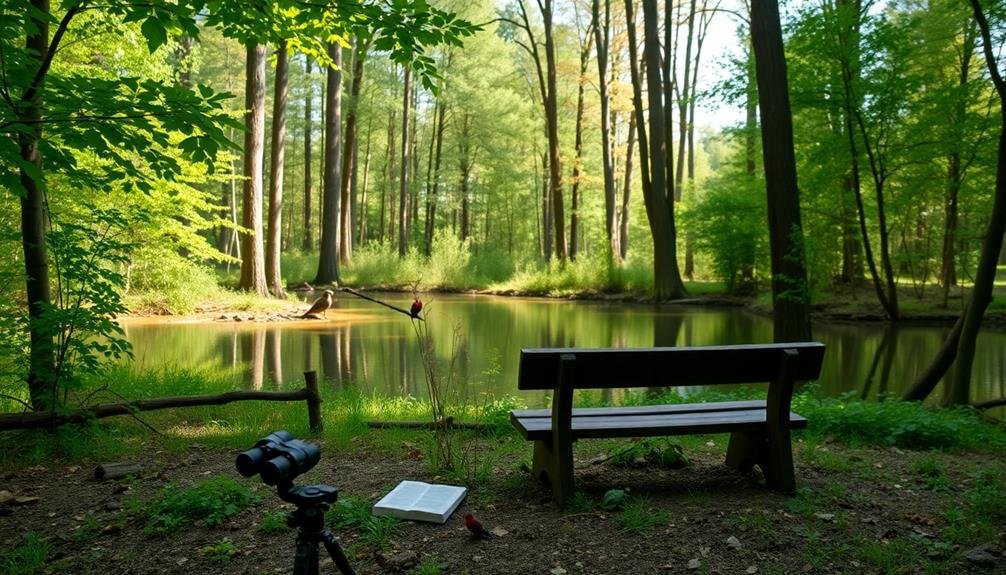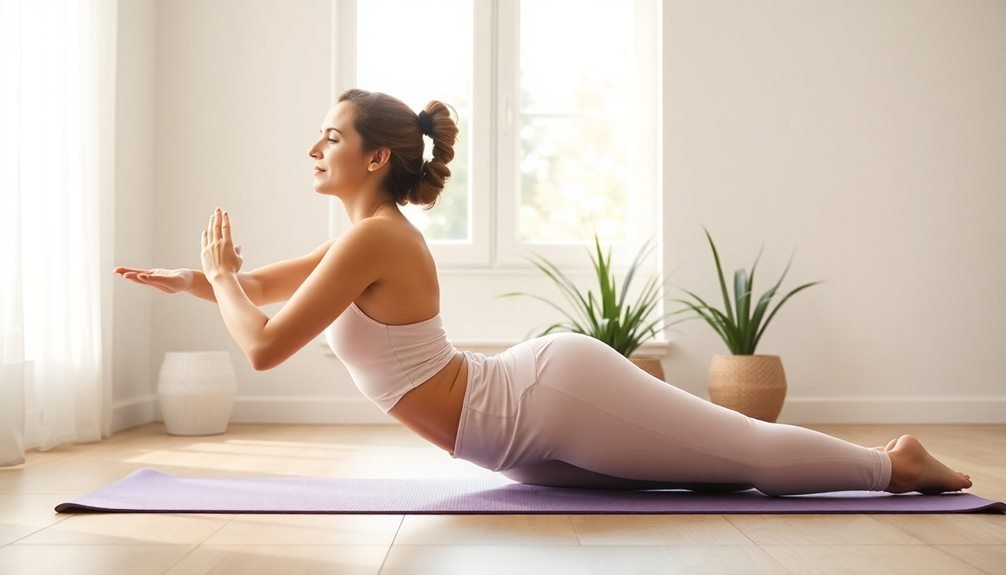Birdwatching can be a powerful tool for anxiety relief, offering three key practices. First, engage in mindful observation by focusing on the present moment, using all your senses to immerse yourself in the birds' world. Second, create a consistent birdwatching routine to provide structure and stability in your life. Choose specific times and locations, preparing your equipment in advance. Third, connect with nature's rhythms by observing patterns in bird behavior that align with natural cycles. This can help you feel more grounded and in tune with the world around you. These practices offer a gateway to deeper relaxation and peace of mind.
Mindful Observation Techniques

Mindful observation techniques form the foundation of therapeutic birdwatching. By focusing your attention on the present moment and the birds around you, you'll cultivate a sense of calm and reduce anxiety.
Start by finding a comfortable spot outdoors where birds are likely to gather. Take a few deep breaths to center yourself before beginning your observation.
As you watch, engage all your senses. Listen for bird calls and songs, noting their pitch and rhythm. Observe the birds' movements, colors, and behaviors without judgment. Notice how they interact with their environment and each other.
If your mind wanders, gently bring your attention back to the birds.
Practice patience and stillness. Don't chase after birds or try to force sightings. Instead, let them come to you.
Use a field guide or birdwatching app to identify species, but don't become overly focused on naming every bird you see. The goal is to immerse yourself in the experience, not to create a perfect list.
Creating a Birdwatching Routine
To maximize the anxiety-relieving benefits of birdwatching, it's important to establish a consistent routine. By setting aside dedicated time for this activity, you'll create a sense of structure and anticipation that can help reduce stress.
Choose a time of day when you're most likely to spot birds in your area, whether it's early morning or late afternoon. Stick to this schedule as much as possible, even if it's just for a few minutes each day.
Consider incorporating these elements into your birdwatching routine:
- Choose a specific location, such as a nearby park or your backyard
- Prepare your equipment in advance, including binoculars and a field guide
- Keep a journal to record your observations and track your progress
- Set small, achievable goals for each session, like identifying a new species
As you develop your routine, you'll find that the predictability and focus required for birdwatching can help calm your mind and reduce anxiety.
Remember to be patient with yourself and enjoy the process of learning and observing. Over time, you'll likely notice improvements in your mood and overall well-being as birdwatching becomes a regular part of your self-care routine.
Connecting With Nature's Rhythms

Birdwatching offers a unique opportunity to sync with nature's rhythms. As you observe birds, you'll notice patterns in their behavior that align with the natural world's cycles. Pay attention to when different species become active, how they respond to weather changes, and their seasonal migrations.
Start by tracking the dawn chorus, when birds are most vocal. This early morning ritual can help you establish a consistent wake-up time, improving your sleep patterns.
Notice how birds' activities change throughout the day, from feeding in the morning to resting during midday heat.
Observe how birds prepare for upcoming weather shifts. Their behavior often signals impending storms or temperature changes, helping you become more attuned to your environment.
Seasonal changes in bird populations can also mark the passage of time, giving you a sense of stability and continuity.
Frequently Asked Questions
What Equipment Do I Need to Start Birdwatching?
You'll need binoculars, a field guide, and a notebook to start birdwatching. Don't forget comfortable shoes and weather-appropriate clothing. A camera's optional but helpful. Finally, consider a birding app for easy species identification on the go.
How Can I Identify Different Bird Species?
You'll need a field guide and binoculars to identify birds. Look for distinctive features like size, shape, color patterns, and behaviors. Listen to their calls and songs. Practice regularly, and you'll soon become familiar with common species in your area.
Are There Any Safety Concerns When Birdwatching Alone?
When you're birdwatching alone, stay alert to your surroundings. Tell someone your plans, bring a charged phone, and stick to well-traveled areas. Watch for uneven terrain, wildlife, and weather changes. Don't trespass on private property.
What Are the Best Times of Day for Birdwatching?
You'll find the best birdwatching times are early morning and late afternoon. Birds are most active during these periods. Dawn's chorus is particularly vibrant. Dusk offers chances to spot nocturnal species. Midday can be quieter but still rewarding.
How Can I Attract More Birds to My Backyard?
You can attract more birds to your backyard by providing food, water, and shelter. Set up bird feeders with diverse seeds, install a birdbath, plant native vegetation, and create nesting areas. Don't forget to keep everything clean and maintained.
In Summary
You've now learned three effective birdwatching practices to help ease your anxiety. By incorporating mindful observation, establishing a routine, and attuning yourself to nature's rhythms, you'll find peace and tranquility in the world of birds. Remember, it's not about spotting the rarest species; it's about being present and allowing yourself to connect with the natural world. So grab your binoculars, step outside, and let the birds guide you to a calmer state of mind.





Leave a Reply